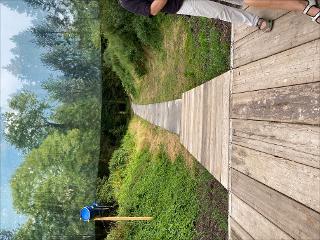| dc.description.abstract | LEARNING OUTCOMES in a time of transition/s:
This upload is for coming MA students to get an impression of the introductory in theory on the MA-programme in design: theory in design-practice, or simply theory 1 (T1).
The aim of the course is simply that: to establish a platform—the student’s own foundation—to identify opportunities for reflection and theorising, in one’s own specialised professional practice.
It is not a foundation course in the sense of a curriculum with predetermined assumptions of what the students need to know, in order to see their designs in an historical context.
Which means that it is the acquisition of certain working habits—for instance, to see and read enough to get reflection going, taking notes, processing them in a logbook, keeping a calendar.
Time, date and place are key for all these entries: when did you study that volume, look at that video, this exhibit, pick up on ideas in class, and on ideas of how develop a logbook?
For many students, these working habits are completely new. And as all new practices they need to be done in order to stick. Keeping track is an individual obligation: a contract with the school.
It is much like driving a car: to be part of the community of drivers—to move and live on the road—there are certain things you need to know and do. It is an individual non-individualistic duty.
To successfully complete an MA you need, as early as possible, to place yourself in the driver’s seat AND be part of a community with multiple drivers. How this works varies from year to year.
During the Covic19 pandemic, for instance, hosting classes, meetings and tutorials on Zoom was the name of the game: people read e-mails differently (in more detail) than when back at school.
In the design-field we should be particularly aware of such variations because, in one way or the other, we are all working with communication. Differently located material/digital communication.
During the pandemic it was our entire work-landscape that changed. Once we had solved that challenge we had to change once more: coming back to school was not like flipping a switch.
Presently, this is the challenge we are facing: learning to work, live and party anew. So, during the two last years, we have been part of two major relocation processes at a planetary scale.
As design-people it is our duty to learn from this. Since what is presently happening is not a return to normal, but a global re-design process: we are creating the foundations for a new society.
Questions of environmental change, social change and security will come to us, time and time again. Which is why keeping track, in an expanded sense, and doing design are closely linked.
We are part of change. We are agents of change. We have to cultivate our responsibility by building a foundation for the ability to respond. We start this work in T1: theory in design practice.
__________
In T1 last year (2021) 5 MA candidates that were examined and passed before the summer came to talk to the MA1 class, in this order: a) Ilayda Keskinaslan [MA interior architecture and furniture design]; b) Pinelopi Spanou; c) Karianne Haagensen; d) Tiril Haug Johne & Victoria Ydstie Meyer.
The attached flyers are examples of a logbook at a class level, kept by the course leader Theodor Barth. Because the hinge on what happens in class, and who the students are, it changes from year to year. However, it gives an impression of a track record of the kind outlined here.
Please mind this: if the two flyer series are conceived as a floor and a roof—the thematic flyers the rood, and the synoptic flyers the floor—then the path of your reflection will catch on and take form in between. | en_US |

